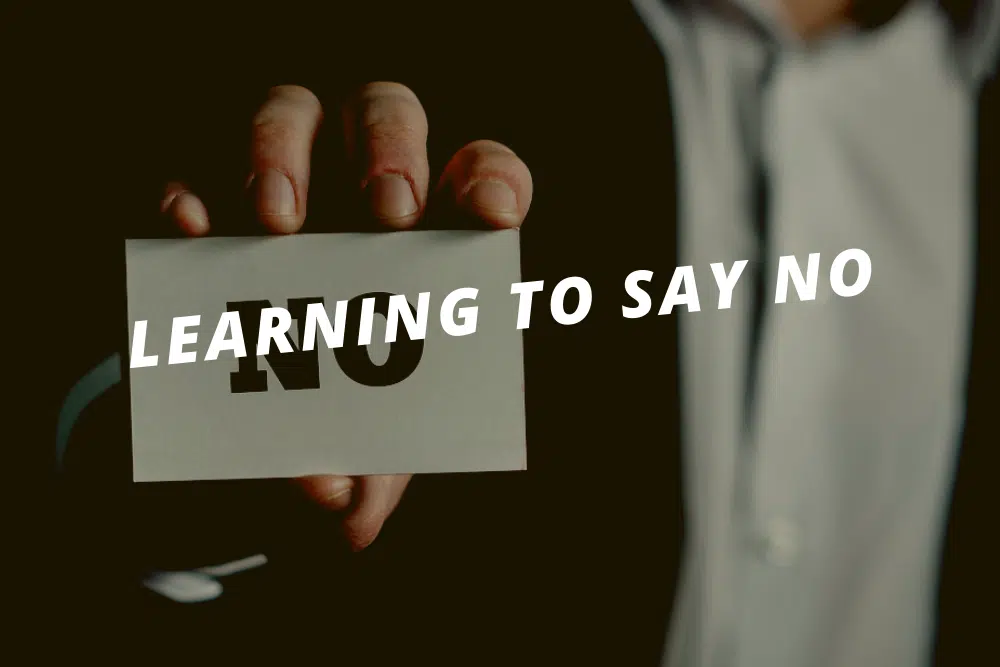Take your success to the next level
Learning to say no
Success is often built on a reflex habit of saying yes to opportunities or requests that come our way. If you say yes and can’t follow through — not because…

Success is often built on a reflex habit of saying yes to opportunities or requests that come our way. If you say yes and can’t follow through — not because you don’t want to or intend to but simply because you don’t have the time to do everything you have said yes to — then you inevitably let the person you said yes to down. Learning to say ‘no’ in the right way will accelerate your success and is a must to successfully implement the stop doing list system.
Here are five tips to help you say no with more confidence:
- Back-of-the-envelope pros and cons. Making a decision with information in front of you is always easier. By simply writing down the pros and cons of either a yes or no decision enables you to clearly see the implications of your decision.
- Actions speak louder than words. It is important that your actions are consistent with your words. If
you are constantly answering yes to things and
not following through because you really should have said no, then you will nd yourself with more challenges that if you simply said no in the rst place. Set yourself some clear rules and boundaries and stick to them.
- If you’re not 100 per cent committed to your answer, then ask for time. Often, we are so busy that we are not 100 per cent present when saying yes or no. If you are unsure whether to answer yes or no to a request, then it is reasonable to ask for some time to rationalise your decision. You might use this time to check your schedule or chat with your team before committing to an outcome.
- Calculate the ROI. You must start to associate a real cost to everything you do. Your time is worth money and you need to ensure you are investing it for maximum return each day. When presented with an opportunity, simply calculate the hours you expect the task or project to take and multiply this by your hourly rate. This simple back-of-the-envelope calculation will make the decision easy.
- Share your reason for saying no. Many of the people you start saying no to may not be used to this answer from you. They may feel rejected and this may strain the relationship. By simply sharing your reason for saying no (you simply have too much on, can’t free up enough budget at the moment, etc.) you will generally get a more positive response and maintain strong working relationships.



